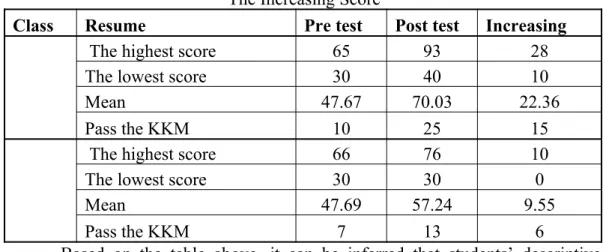Eighth Grade of State Junior High School 2 Raman Utara, East Lampung in the Academic Year of 2010/2011. EC) at the Eighth Grade of State Junior High School 2 Raman Utara, East Lampung in the Academic Year of 2010/2011.
Background of the Study
The students are supposed to be more active during the teaching learning process of descriptive text. By using the SOL, students' problems with learning descriptive text can therefore be overcome.
Problem Identification
The teacher can give an example about descriptive text related to the real world of the students, e.g. In addition, the CTL can hopefully help the teacher improve their performance while teaching descriptive text.
Problem Limitation
The eighth grade students at State Junior High School 2 Raman Utara, East Lampung in the academic year 2010/2011 found difficulties in writing descriptive texts. Contextual Teaching Learning (CTL) is a writing approach that can be used in the teaching of descriptive text writing.
Problem Formulation
To motivate the students of State Junior High School 2 Raman Utara, East Lampung to study English, especially in descriptive text writing. To provide information to the English teacher of State Junior High School 2 Raman Utara, East Lampung about the correlation of teaching descriptive text writing through the SOL approach and the students'.
Theoretical Review
- The Concept of Writing Ability
- Descriptive Text
- Teaching Writing
- Teaching Descriptive Text Writing
- Teaching Descriptive Text Writing through the Contextual Teaching and Learning (CTL) Approach
- English Syllabus for Eight Grade of Junior High School
If the students are curious about something, they will automatically ask the teacher more about it and the teaching learning process will be lively. Based on the example given, students are then asked to make their own descriptive text. The data can be used as information for the teacher to make students more active.
In this case, the teacher must help them by building constructivism. students can build their own understanding on the basis of prior knowledge by becoming part of the learning process of teaching. In order for students to make a good descriptive text, they need some examples from their teacher. After the teacher has given some examples of good descriptive text, students can reflect on their own text.
Based on the above assessment, the teacher can get valid and accurate information about the progress of the students. From the above frame of mind, it can be described that the Contextual Teaching Learning (CTL) approach will increase the descriptive writing ability of the students.
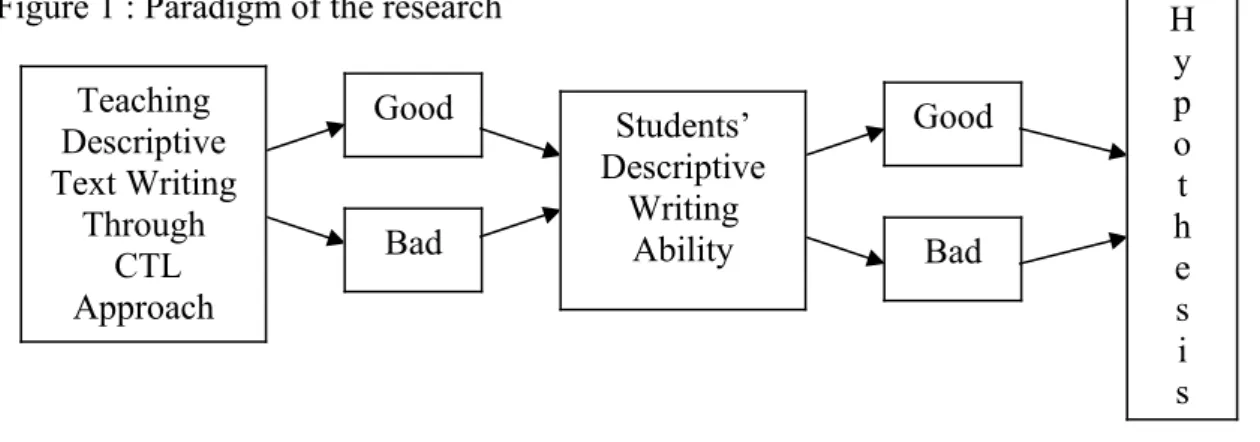
Hypothesis Formulation
The increase in students' descriptive writing ability through the Contextual Teaching Learning (CTL) approach will be good, average, or poor depending on how the approach is used. If there is a positive and significant increase of contextual teaching (CTL) approach to students' descriptive writing ability in the eighth grade of SMP N 2 Raman Utara, East Lampung, then this technique is good and accepted. However, if there is no positive and incremental (not progressive or negative) contextual teaching learning (CTL) approach to students' descriptive writing ability in the eighth grade of SMP N 2 Raman Utara, East Lampung, this approach is poor and rejected.
Research Design
T1 = Pre-test, It was given to know the students' ability to write descriptive text before they were given special treatment. T2 = Post-test, It was given to know the descriptive ability of the student's text before he was given special treatment. X1 = Treatment, It was given to apply the material, which was a descriptive teaching text writing through the CTL approach.
Population and Sampling Technique 1. Population
The research sample was class B consisting of 33 students as the experimental class (EC) and class D consisting of 34 students as the control class (CC).
The Operational Definitions of Variables
A dependent variable is a variable that you observe and measure to determine the effect of the independent variable.26 The dependent variable of this research (Y) was the ability to describe a text. Writing ability is the skill of expressing ideas, thoughts and feelings to other people in written symbols so that other people or readers can understand the ideas conveyed. It can be defined as being able to write a paragraph related to content, organization, vocabulary, language use, mechanism of written text.
Data Collection Method
Test
This test gave in order to know far the students' descriptive text writing ability before treatment to determine the readiness of the instructional program, and to diagnose individuals' specific strengths and weaknesses in descriptive text writing ability. After completing the teaching and learning process using CTL approach, the author administered a post-test to the class. It is done to know the students' descriptive text writing performance after treatment.
Documentation
Research Instrument
Instrument Bluprint
Instrument Calibration
The author constructed the test instrument based on the subject content of the syllabus in that school.
Data Analysis Technique
Average to good: adequate range, occasional errors in words/idioms, form, choice, usage, but meaning not obscured. Poor or fair: limited range, frequent errors in words/idioms, form, choice, usage, meaning confused or unclear. Very good to excellent: effective complex construction, few agreement errors, tense, word order/function, article, pronoun and preposition.
Very good to excellent: demonstrated mastery of convention, few spelling errors, punctuation, capitalization, paragraphs. Weak in law: frequent errors in spelling, punctuation, capitalization, paragraphs, poor handwriting, meaning confused or obscured. Very poor: no grasp of conventions, dominated by errors in spelling, punctuation, capitalization, paragraphs, handwriting, illegible or insufficient to be graded33.
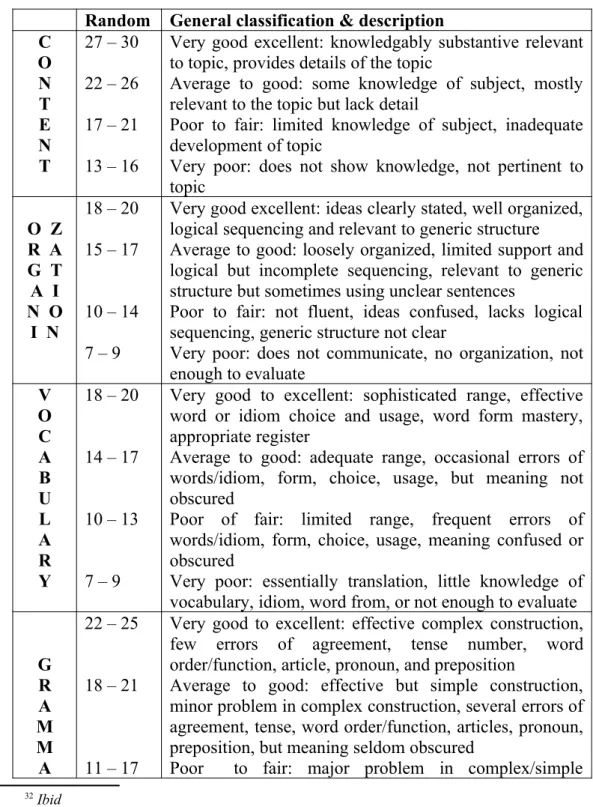
RESULT AND DISCUSSIONRESULT AND DISCUSSION
General Description of Research Location
- The History of State Junior High School 2 Raman Utara, East Lampung in the Academic Year of 2010/2011
- OSIS
- The Condition of Teachers and Official Employees in State Junior High School 2 Raman Utara, East Lampung in the Academic Year of 2010/2011
- The Students Condition of State Junior High School 2 Raman Utara, East Lampung in the Academic Year of 2010/2011
- The Result of the Pre-test
- The Result of Post-test
The number of students in Government Secondary Secondary School 2 Raman Utara, East Lampung in the academic year 2010/2011. Eighth Grade Experimental Class (EC) Preliminary Test Result of National Secondary School 2 Raman Utara, East Lampung. Frequency distribution of experimental class (EC) pre-examination result in eighth grade of government junior high school 2 Raman Utara,.
The control class pre-test result in the eighth grade of State High School 2 Raman Utara, East Lampung. Frequency distribution of control class (CC) pre-test results in the eighth grade of Government Secondary School 2 Raman Utara, East Lampung. Frequency distribution of experimental class (EC) post-test results in eighth grade of government junior high school 2 Raman Utara,.
The result of the Control Class (CC) Post Test in Eighth Grade of State Junior High School 2 Raman Utara, East Lampung. Frequency distribution of control class (CC) post test result in eighth grade of State Junior High School 2 Raman Utara, East Lampung.
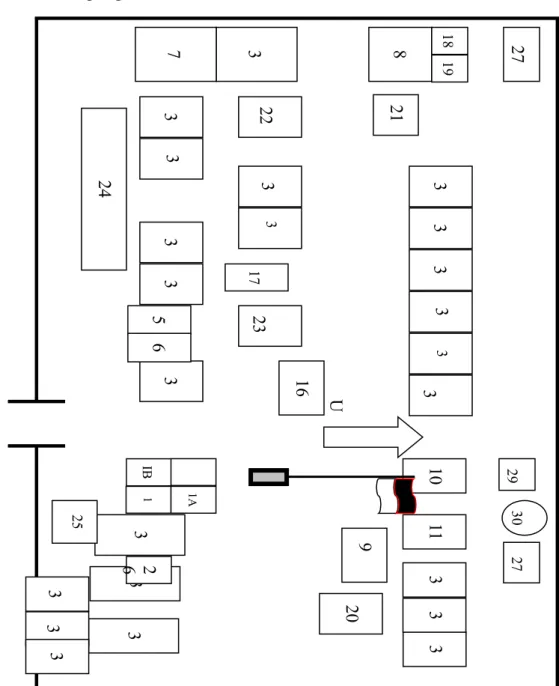
Hypothesis Test
The critical value t is 11.76 based on the calculation above, it can be deduced that there is a significant difference between the student's performance in learning descriptive writing between Experimental Class (EC) and Control Class (CC) at the Eighth Degree from State Junior High School 2 Raman Utara, East Lampung in the academic year 2010/2011. The hypothesis that is applied in this research is the alternative hypothesis (Hi) there is a positive and significant difference between the student's performance in learning descriptive writing between Experimental Class (EC) that uses SOL approach and Control Class (BK) is taught which is taught without SOL approach or regular approach used by the teacher) at the Eighth Grade of State Junior High School 2 Raman Utara, East Lampung in the Academic Year of 2010/2011. After considering the t-table using df 69, the author did not find it in t. So, it was done with interpolation, because 65 is higher than 60 and smaller than 120.
It means that there is a positive and significant difference on student performance in learning descriptive writing between experimental class (EC) which is taught through CTL approach and control class (CC) which is taught without CTL approach or. 35 Sugiyono, Metode Penelitian Pendidikan, (Alfabeta, Bandung, 2008). p. 454. mainstream approach used by the teacher) in eighth grade at State Junior High School 2 Raman Utara, East Lampung in the academic year 2010/2011.
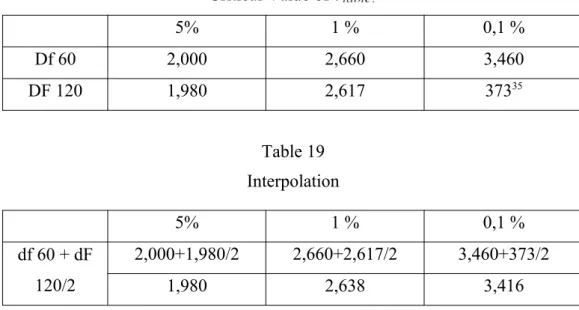
Discussion of the Finding
Therefore, the hypothesis is accepted which indicates that it means that there is a positive and significant difference of student's performance in learning descriptive writing between Experimental Class (EC) which is taught through SOL approach and Control Class (CC) which is taught without SOL approach or regular approach used by the teacher) at the Eighth Grade of State Junior High School 2 Raman Utara, East Lampung in the Academic Year of 2010/2011. It can therefore be concluded that the teaching applied in EK (SOL approach) is more effective than teaching applied in CC (without SOL approach) in terms of student's descriptive writing performance.
Limitation
The student's problem in building the writing was that some students were confused about how to start their writing.
Conclusions
After obtaining the means of pre- and post-test, the data were analyzed by using t to know the significance of the treatment effect. After considering the t-table using df 63, the writer did not find it in the table. This means that there is a positive and significant difference on student performance in learning descriptive writing between Experimental Class (EC) which is taught through CTL approach and Control Class (CC) which is taught without CTL approach or regular approach which used by the teacher) at the eighth grade of State Junior High School 2 Raman Utara, East Lampung in the academic year 2010/2011.
In other words, it can be said that teaching descriptive writing through Contextual Instructional Learning (SOL) approach is effective in increasing the students' descriptive writing ability.
Suggestion
- For the English Teacher
- For Further Research
The students are advised to improve their skills in language components (structure and grammar). The teacher should come to the students and help them if they have difficulty understanding the meaning of the sentences. The teacher should provide key vocabularies and key term vocabulary to motivate the students and help them convert the content into a descriptive form.
The English teachers are advised to try to cooperate in using the CTL approach, not only in teaching descriptive writing, but also in other language skills such as speaking, reading and the like. Give the students the opportunity to share their ideas by asking some questions of the students. Let the students gain the knowledge themselves; don't give them the knowledge directly.
